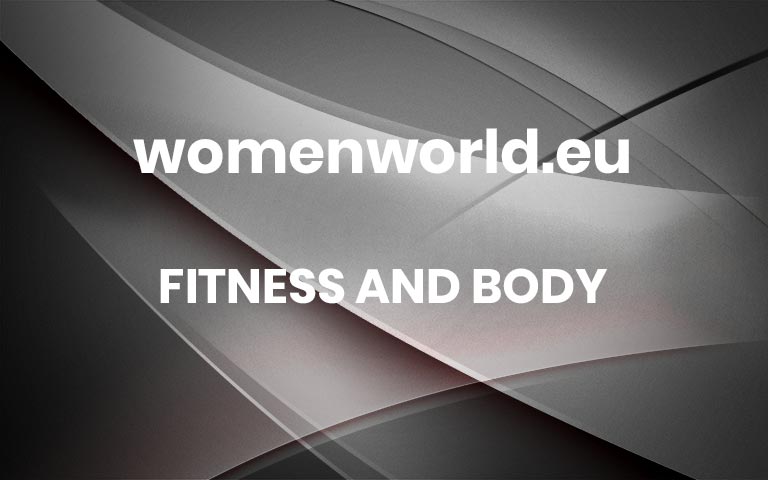A home workout plan hits hard, if you know what you’re doing. While you’ll probs pick up a few tips from watching others in the gym/asking staff for help (when you’re not catching your breath/wiping sweat from your eyes, obvs), you’re kinda going it alone in your living room.
Would WH let you do that, though? To hell we would. We’re here to steer you to success with this four-week home workout plan designed to deliver a fitter, stronger you in just 28 days. You don’t need any fancy kit, just some fitness motivation, a good sports bra, a refillable water bottle and, perhaps closing blinds to spare your neighbours the front row seat to your sweaty endeavours.
Can you see results from a 4-week home workout plan?
Yup. You sure can. From improvements to your stamina and endurance to body composition changes (if that’s your goal), it is most definitely possible to see and feel changes after a month-long fitness plan.
The key is to stick with the exercise plan. If, after workout one, you’re not feeling any fitter – don’t despair. It’s like learning how to paint, you’re not going to be Bob Ross after a single brush stroke. However, if you put the effort in each day, each week, improvements will come.
What you’ll need to start your home workout plan
Should you be one of those eternally motivated people, with a regular home workout routine inked into the diary, power to you. Like, serious props. It’s not easy but we see you getting after it. If, however, you’re part of the other 98% of living humans, a kick up the bum in the form of a brand new, snazzy, well-thought-out home workout plan is usually most welcome.
Herein lies the magic: we’ve put together a special four-week exercise plan that’ll get you fit and sculpt lean muscle, guiding you through 28 days of strengthening moves and routines.
Your at-home fitness plan overhaul starts here.
Equipment you’ll need:
– Dumbbells
– A skipping rope
– A medicine ball
Your 4-week home workout plan
Four days a week, you’ll do a warm-up followed by circuits or an AMRAP workout (that’s ‘as many rounds as possible’ within a set amount of time). Wednesdays and Sundays are your cardio days – choose between HIIT training or a steady-pace session.
‘Wait, what?’ we hear you protest – Sunday is for bingeing Disney+, no?
Not for the foreseeable, it’s about to become a productive training day. Saturdays are for resting now, so get with the fitness program, people! Scroll down for your weekly workout plan.
Read through the entire plan before starting. If there are any moves you’re unfamiliar with, scroll to the bottom for our full step-by-step how-to on every single exercise.
Week One
Monday
Warm-up: 5 mins of skipping
Workout: AMRAP in 20 mins
1. Burpees (10 reps)
2. Crunches (20 reps)
3. Plank (30 secs)
4. Kneeling press-ups (40 reps)
5. Lunges (50 reps)
6. Running on the spot (60 secs)
Tuesday
Warm-up: 10-min light jog
Workout: AMRAP in 15 mins
1. Running on the spot with high knees (100 reps)
2. Bicycle crunches (80 secs)
3. Supermans (60 reps)
4. Sumo squats (40 reps)
5. Lying leg raises (20 reps)
Wednesday
Warm-up: 5-min light jog
Cardio: Run as far as you can in 24 mins, alternating between a 1-min sprint and a 2-min jog.
Thursday
Warm-up: 5 mins of skipping
Workout: Complete the following circuit 5 times:
1. Lying leg raises (1 min)
2. Lunges (1 min)
3. Sumo squats (1 min)
4. Running on the spot with bum kicks (1 min)
5. Rest (1 min)
Friday
Warm-up: 8-min light jog
Workout: Complete the following circuit 5 times
1. Glute bridges (50 reps)
2. Sumo squats (50 reps)
3. Kneeling press-ups (50 reps)
4. 200m run
Saturday
Rest day
Sunday
Cardio: 45 mins of cycling, jogging, skipping or yoga.
Week Two
Monday
Warm-up: 5 mins of skipping
Workout: AMRAP in 20 mins:
1. Jump squats (10 reps)
2. Twisting sit-ups (20 reps)
3. Press-ups (30 reps)
4. 400m run
Tuesday
Warm-up: 15-min light jog
Workout: AMRAP in 20 mins
1. Running on the spot with bum kicks (100 reps)
2. Sumo squats (80 reps)
3. Hollow rocks (60 reps)
4. Curtsy lunges (40 reps)
5. Plank builders (20 reps)
Wednesday
Warm-up: 5-min light jog
Cardio: Run as far as you can in 24 mins, alternating between a 1-min sprint and a 1-min jog
Thursday
Warm-up: 5 mins of skipping
Workout: AMRAP in 25 mins:
1. Running on the spot with high knees (100 reps)
2. Sumo squats (80 reps)
3. Mountain climbers (60 reps)
4. Woodchops (40 reps)
Friday
Warm-up: 12-min light jog
Workout: AMRAP in 20 mins:
1. Glute bridges (50 reps)
2. Sumo squats (50 reps)
3. Press-ups (50 reps)
4. 200m run
Saturday
Rest day
Sunday
Cardio: 45 mins of cycling, jogging, skipping, yoga or swimming
Week Three
Monday
Warm-up: 5-min jog
Workout: Complete the following circuit 3 times with a 1-min rest between exercises:
1. Burpees (30 secs)
2. Butterfly crunches (30 secs)
3. Triceps press-ups (30 secs)
4. Skipping (30 secs)
Tuesday
Warm-up: 12-min light jog
Workout: AMRAP in 30 mins:
1. Step-ups (30 reps each leg)
2. Standing dumbbell shoulder presses (10 reps)
3. Medicine ball twists (30 reps)
4. Lying leg raises (10 reps)
5. Lunges (30 reps)
6. Dumbbell rows (10 reps)
Wednesday
Warm-up: 5-min jog
Cardio: Run for 28 mins, alternating between a 2-min sprint and a 2-min jog
Thursday
Warm-up: 5 mins of skipping
Workout: AMRAP in 30 mins:
1. 200m run
2. Walkouts (10 reps)
3. Medicine ball twists (20 reps)
4. Pike press-ups (30 reps)
5. Overhead step-ups (30 reps per leg)
6. Plank (50 secs)
Friday
Warm-up: 10-min light jog
Workout: Complete the following circuit 5 times:
1. Squat hold (60 secs)
2. Jump squats (15 reps)
3. Crunches (30 reps)
4. Burpees (15 reps)
5. Butterfly crunches (15 reps)
6. Dumbbell thrusters (15 reps)
Saturday
Rest day
Sunday
Cardio: 45 mins of cycling, jogging, skipping, yoga or swimming
Week Four
Monday
Warm-up: 15-min jog
Workout: Take as long as you need to complete the following:
1. Sumo squats (150 reps)
2. Overhead split squats (100 reps)
3. Press-ups (50 reps)
4. Crunches (25 reps)
Tuesday
Warm-up: 10-min light jog
Workout: AMRAP in 20 mins:
1. Running on the spot with high knees (100 reps)
2. Bicycle crunches (80 reps)
3. Sumo squats (40 reps)
4. Lying leg raises (20 reps)
Wednesday
Warm-up: 5-min light jog
Cardio: Do these exercises one after the other:
1. Run 1km; then 50 skips with a skipping rope
2. Run 800m, then do 30 burpees
3. Run 600m; then 25 mountain climbers
4. Run 400m; then 20 sumo squats
5. Run 200m; then 10 jump squats
Thursday
Warm-up: 5 mins of skipping
Workout: Complete the following circuit 4 times:
1. Walkouts (60 secs)
2. Overhead split squats (60 secs)
3. Running on the spot with bum kicks (60 secs)
4. Rest (60 secs)
Friday
Warm-up: 12-min light jog
Workout: AMRAP in 30 mins:
1. Jump squats (60 reps)
2. Bicycle crunches (60 reps)
3. Lying leg raises (60 reps)
4. Plank builders (20 reps)
5. Burpees (15 reps)
6. Dumbbell thrusters (15 reps)
Saturday
Rest day
Sunday
Cardio: 45 mins of cycling, jogging, skipping, yoga or swimming
Fitness plan step-by-step guide to every exercise
Okay, most of the exercises you’ll know already – but for the ones you may be less familiar with, we’ve got you covered…
Butterfly Crunch
Targets: Core
a) Lie on your back with the soles of your feet together so your knees are bent out to the sides. Straighten your arms overhead, with your biceps touching your ears.
b) Use your abs to lift your upper body, bringing your arms over your head and in between your knees. Then roll back down, slowly and with control.
Dumbbell Thruster
Targets: Glutes, legs, shoulders
a) Stand with your feet shoulder-width apart, holding dumbbells next to your shoulders, then lower into a squat.
b) Straighten back up to standing as you press the weights overhead.
Dumbbell Row
Targets: Biceps, upper back, shoulders
a) Stand with your feet shoulder-width apart, holding a pair of dumbbells. Hinge at the hips until your back is almost parallel to the floor. Your palms should be facing your legs. This is your starting position.
b) From here, slowly draw the weights up toward the sides of your chest. Pause, then slowly lower the weights and repeat.
Hollow Back
Targets: Core
a) Lie on your back with your arms and legs fully extended.
b) Raise your arms and legs off the floor at the same time, creating a hollow basin shape. Then slowly lower back down to the ground.
Overhead Split Squat
Targets: Core, glutes, hamstrings, quads
a) Stand with your left foot a big step in front of the right, holding dumbbells overhead.
b) Bend both legs until your back knee is just off the ground. Then repeat. Swap sides halfway through your reps.
Overhead Step-up
Targets: Core, glutes, hamstrings, quads, shoulders
a) Stand with your feet shoulder-width apart, facing a bench or step that’s about knee height. Hold dumbbells straight above your head.
b) Lift your right knee to place your foot on the bench. Push down through your right foot to step up. Then step back down and repeat on the other leg.
Pike Press-up
Targets: Shoulders, chest, triceps
a) In a press-up position with your hands shoulder-width apart, walk your feet forwards and stick your hips up in the air. With straight legs, bend your elbows until your head nearly touches the floor.
b) Push back up to straighten your arms. Continue pushing up and down.
Standing Dumbbell Shoulder Press
Targets: Core, shoulders
a) Stand with your feet shoulder-width apart, holding dumbbells up by your shoulders.
b) Straighten your arms to press the weights above your head – but don’t lock your elbows. Then slowly reverse the movement.
Inchworm
Targets: Core, chest, shoulders, triceps
a) Stand with your feet hip-width apart, then bend over and place your hands on the floor in front of your feet.
b) Walk your hands away from your body until you’re in a plank position, then reverse the movement back up to standing.
Superman
Targets: Lower back
a) Lie on your front with your arms outstretched and hands on the floor.
b) Lift your chest, arms and legs off the floor, hold for 2-3 secs, then lower your body back down to the floor.
Triceps Press-up
Targets: Core, chest, shoulders, triceps
a) Get into a press-up position with your hands together beneath your chest. Bend your elbows to lower yourself to the floor.
b) Straighten your elbows to push back up to the starting position.
Sumo Squat
Targets: Core, legs, glutes
a) Stand with your feet wide and slightly angled outwards, hands clasped in front of your chest.
b) Sit back into a squat. Pause when your thighs are parallel to the floor, then go deeper if it feels comfortable. Keep your back straight and knees in line with your feet. Then push back up to standing.
Commandos
Targets: Core, shoulders, chest
a) Start in a forearm plank with your hands together. Your body should be in a straight line from ankles to shoulders.
b) Lift your right arm and place your hand where your right elbow was, straighten your elbow, then do the same with your left arm so you’re in a plank. Go back down onto your elbows and repeat on the other side.
Woodchop
Targets: Core, chest, shoulders
a) Sit in a partial squat, holding a weight or medicine ball to the outside of your left knee.
b) Straightening your legs, lift the ball across your body in an arc so it ends up above your head on the right. Then reverse back to the starting position. Swap sides halfway through your reps.
How to make the home workout plan easier
Fret not if you’re struggling. This fitness plan is easily scalable to suit your ability/energy levels. Here are a few ways you can take it down a notch:
– Replace one workout day with an additional rest day
– Reduce each prescribed AMRAP session by 5 or 10 mins
– Reduce each prescribed cardio session by 10 mins
– Reduce each circuit by one round (i.e. when you’re prescribed 4 rounds, do 3)
This story was originally published in womenshealth.com.au
READ MORE ON: Fat Burning Workouts Workouts More




